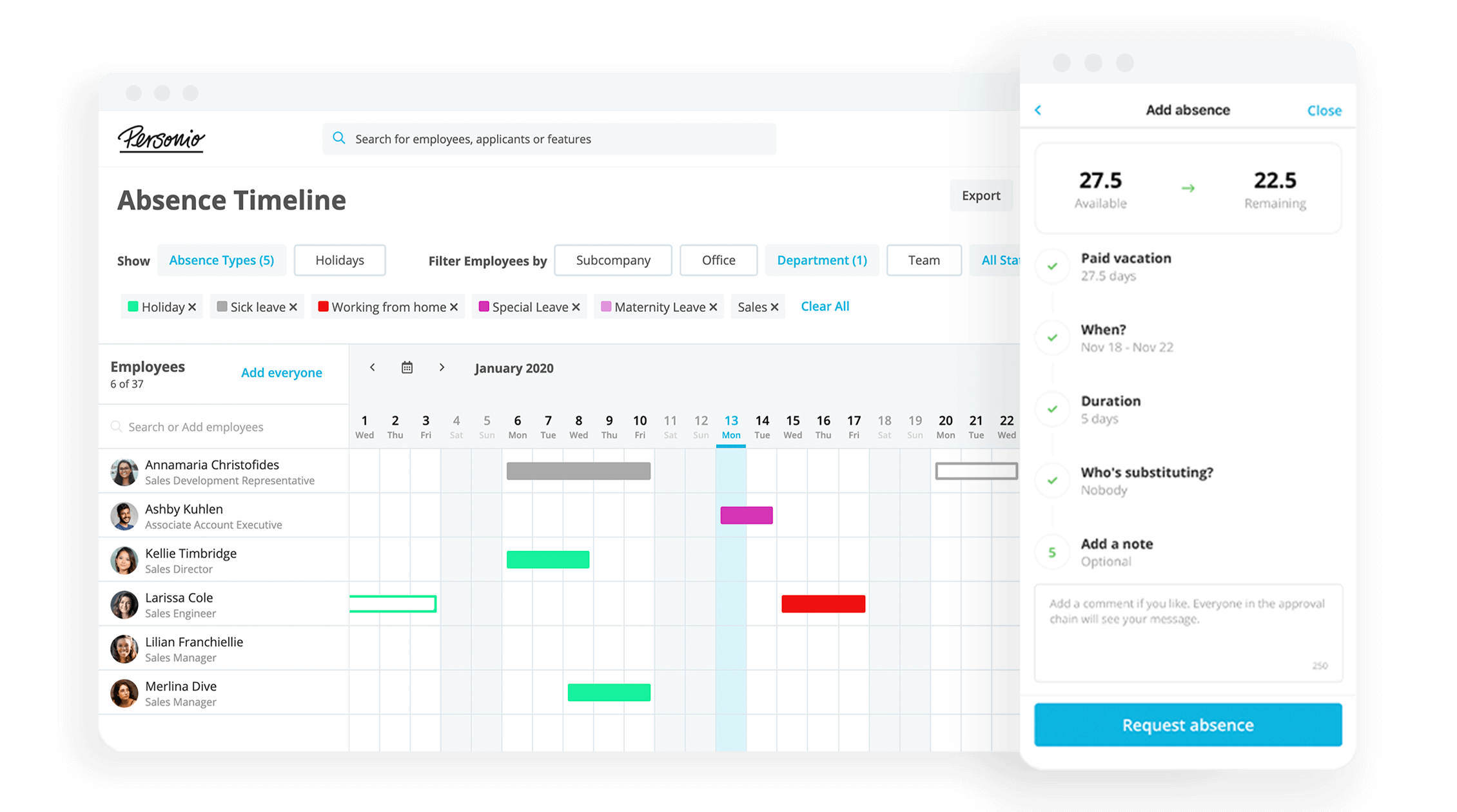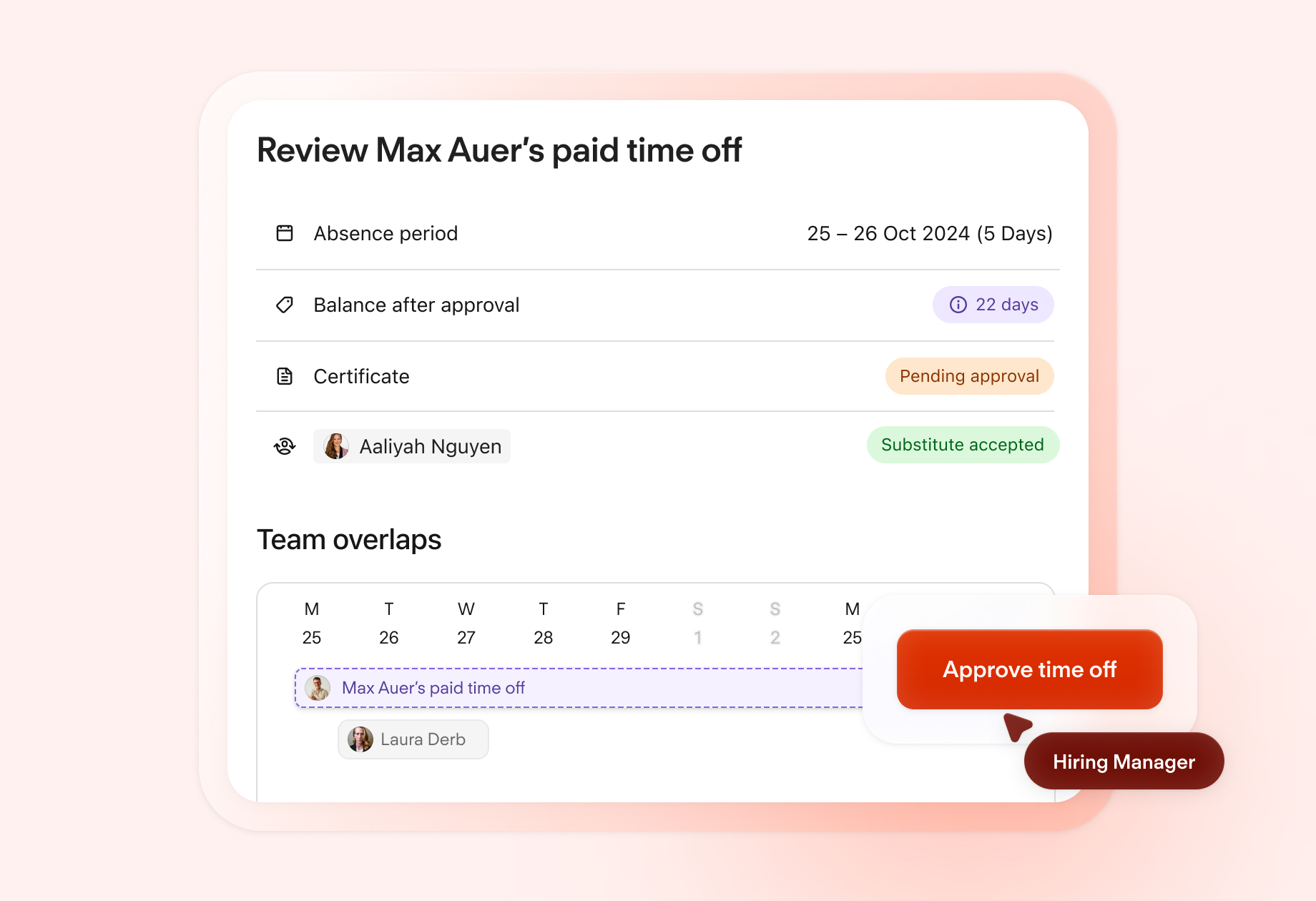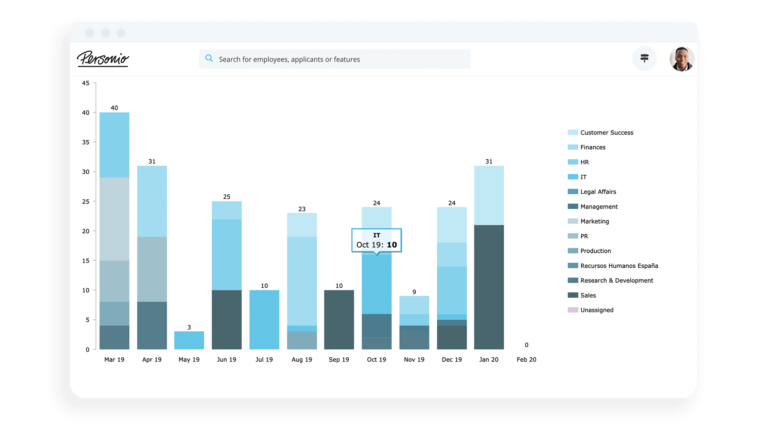Bereavement Leave and Time Off – What You Need To Know

What is bereavement leave and what is the purpose of it? Allow us to detail the procedures surrounding it and discuss the difference between bereavement leave and compassionate leave. You’ll also learn best practices for reacting to an employee’s personal loss.
Key Facts
Employees are entitled to a reasonable amount of bereavement leave to get their personal lives in order after the death of a family member or dependant.
Most bereavement leave has no legal time or pay requirements; companies decide those things for themselves.
Compassionate leave is often used interchangeably with bereavement leave, but tends to have broader uses.
Contents
- 1What is Bereavement Leave?
- 2What is the Purpose of Bereavement Leave?
- 3Employees’ Rights to Bereavement Leave
- 4How Should Employers Manage Bereavement Leave?
- 5The Importance of a Bereavement Leave Policy
- 6Bereavement Leave vs. Compassionate Leave: What’s the Difference?
- 7Frequently Asked Questions About Bereavement Leave
- 8Track All Types of Leave with Personio
What is Bereavement Leave?
Bereavement leave is offered to an employee following the death of a dependent, including children, parents, grandparents, spouses and anyone else who may depend on them for care. While a certain length of time for bereavement is not a requirement, it is typically standard for companies to have a bereavement policy in place.
What is the Purpose of Bereavement Leave?
If an employee works at your company long enough, it’s likely that they will endure a personal loss at some point. Grief affects everyone differently, but regardless of how an employee handles it, it’s a powerful emotion which can negatively impact their work.
Enter bereavement leave. After some time away from their jobs, an employee can find a clearer headspace while also being able to handle end-of-life arrangements.
Empathy and compassion have become vital factors as it concerns employee retention. At minimum, granting time off is a common courtesy that demonstrates to your employees that you support them in times of need.
At the same time, not having a sufficient bereavement policy can cause undue stress on a grieving employee and it could impact their desire to stay and grow with your company. Your brand’s reputation could become irreparably damaged.
Employees’ Rights to Bereavement Leave
In the United King, employees have a legal right to time off to deal with emergencies involving their dependents. However, the laws behind bereavement are somewhat nebulous to give employers flexibility in dealing with bereavement cases because each circumstance can require different accommodations.
How Long Is Bereavement Leave?
There’s no set legal limit to how much bereavement leave an employee can take. Any limits imposed on the amount need to be set by your own policies, but companies typically grant around three to five days of leave.
Whatever amount of time you allow, make sure to include a meeting with a supervisor or HR representative to discuss how much time the employee believes they need. Be sure that your policy is clearly communicated as well, so employees can easily find it and know what they're entitled to when they need it.
How Long Is Parental Bereavement Leave?
The framework of parental bereavement leave is more concrete than other types of bereavement leave. When an employee loses a child, they’re entitled to two weeks' leave for each child who has died. This leave can start on the day of their child’s death and must finish within 56 weeks of the event.
What Happens if the Loss Is a Dependent?
The loss of a dependant such as a parent, grandparent or anyone who relied on the employee financially qualifies an employee for bereavement leave. While there’s no set limit for the time they can take off, the law requires that it be ‘reasonable.’
That’s why you should meet with your employee beforehand to figure out how much time they need and ensure that your allotted time isn’t too short.
Managing Special Leave Through Personio

Personio offers a wide range of customizable absence types, from vacation to compassionate leave. Employees are then able to select what works for you, and in a few clicks have a place to easily, securely, and quickly document it.
Here's How It WorksHow Should Employers Manage Bereavement Leave?
Since the law only dictates that employees have a right to bereavement leave when they suffer the loss of a dependant, the exact parameters of that leave are up to the employer. Everyone handles grief differently and varying religious traditions have different mourning rituals.
Therefore, a one-size-fits-all approach to bereavement might not allow some workers to process their loss properly.
As an employer, you can decide how much leave an employee receives on a case-by-case basis, taking your staff's opinion on the matter into account. Additionally, it’s up to you to decide how much to pay the employee while they’re gone (for the most part).
Employees are not entitled to a legal right to payment during their bereavement leave unless they qualify for parental bereavement. In that case, workers are entitled to £156.66 a week or 90% of their average weekly earnings, whichever is lower. Otherwise, whether you pay an employee and how much is up to you.
It should be noted that your organisation is also under no legal obligation to allow bereavement leave if the person who died wasn’t a dependant. But not allowing employees time to grieve will only damage their work performance, so it’s often best to find alternative accommodations.
The Importance of a Bereavement Leave Policy
How you handle employees who experience devastating personal losses is a part of how future employees may assess the company as an employer so it’s vital for your company to have a bereavement policy in place. It demonstrates that you care about supporting your workforce in difficult times while giving them time to grieve and return to work with clearer minds.
Additionally, an employee in grief won’t focus or be invested in their work while balancing such a devastating personal blow. It’s best for productivity and work quality to give that employee time and space.
Without a bereavement procedure, some companies let employees use any holiday or sick leave they’ve built up. But, without official guidelines, leadership and HR representatives then won’t have any instructions to follow when deciding how to handle each employee’s case. This doesn’t just refer to bereavement leave but also entails how you interact with a grieving worker. If the conversation goes poorly, it will reflect badly on the company as a whole. It also puts a grieving employee in a position to use holiday time for an unrelated matter, which can build resentment towards the company.
Additionally, while that might be a suitable substitute for normal bereavement leave, parental leave is entrenched in the law a bit more firmly. Employees are entitled to a certain amount of time off and a certain amount of pay; an absence of a policy to handle cases where parents lose children can get your organisation in legal trouble.
At a Glance: Easily Manage Absences Across Your Org

Make absence planning and tracking a pleasure, and not a pain, with Personio.
Track absences with PersonioBereavement Leave vs. Compassionate Leave: What’s the Difference?
The terms bereavement and compassionate leave are often used interchangeably because they tend to come up in similar situations. Both grant employees a certain amount of time off work to deal with a stressful situation with or without pay. One of the main differences between the two is scope. Bereavement leave only applies to dependants' deaths, whereas compassionate leave covers all non-dependant incidents.
For example, if an employee wanted to look after a friend who recently had a traumatic experience, they’d ask for compassionate leave instead of bereavement. While that allows your workers to get their personal lives in order, compassionate leave tends to be more disruptive because of how much it covers.
It’s rare to be able to plan for major incidents, so employees needing bereavement leave can give the company little time to prepare for an absence. Compassionate leave can be worse in that regard because it’s for employees to care for non-dependants who experience ordeals other than death. The wider extent of compassionate leave tends to mean that it’s used far more often than typical bereavement leave.
Frequently Asked Questions About Bereavement Leave
How Long Is Bereavement Leave?
There’s no set limit on how long bereavement leave can last. However, the law states that the time given to an employee must be a reasonable amount so they can deal with their personal issues.
How Long Is Parental Bereavement Leave?
Employees who lose a child are entitled to 2 weeks of bereavement leave. This time can be used differently than other bereavement leave.
What Happens With Payment of Employees on Bereavement Leave?
Companies aren’t legally required to pay employees on regular bereavement leave, and whether they do depends on their specific policies.
Track All Types of Leave with Personio
Bereavement leave is just one type of leave. For any organisation, you also need to track bank holidays, regular holidays and a host of other special days. Using Personio’s absence management feature, you can easily empower your employees to request time off, enable managers to approve those requests and allow HR to maintain reports and see who is in, who is out and who is planning to be out at a glance. Speak with an expert today about how Personio can upgrade the way your organisation manages leave.
Disclaimer
We would like to inform you that the contents of our website (including any legal contributions) are for non-binding informational purposes only and does not in any way constitute legal advice. The content of this information cannot and is not intended to replace individual and binding legal advice from e.g. a lawyer that addresses your specific situation. In this respect, all information provided is without guarantee of correctness, completeness and up-to-dateness.
